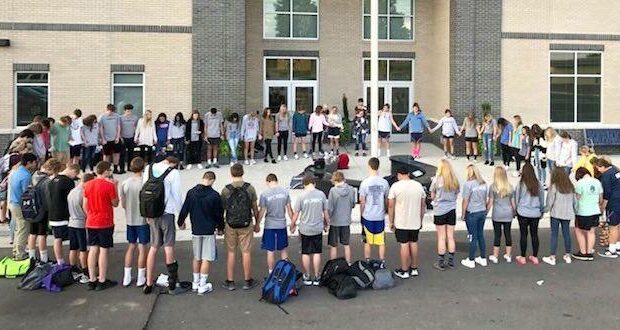The Biden administration’s new guidance on religious expression in public schools is raising red flags among religious rights legal groups. Earlier this week, the U.S. Department of Education released “Guidance on Constitutionally Protected Prayer and Religious Expression in Public Elementary and Secondary Schools.”
“The purpose of this updated guidance is to provide information on the current state of the law concerning constitutionally protected prayer and religious expression in public schools,” the department said. “The principles outlined in this updated guidance are similar to the U.S. Department of Education’s 2003 and 2020 guidance on constitutionally protected prayer in public schools and with guidance that President Clinton issued in 1995.”
“In contexts where a school permits teachers, coaches, and other employees to engage in personal speech, however, it may not prohibit those employees from engaging in prayer merely because it is religious or because some observers, including students, might misperceive the school as endorsing that expression,” the Department of Education wrote. “That said, a school may take reasonable measures to ensure that teachers, coaches, and other school officials do not pressure or encourage students to join in the private prayer of those officials or other students.”
Keisha Russell, counsel at the First Liberty Institute, says that she has concerns with the guidance. “We respect that the Biden administration acknowledges the important religious liberty rights of public school employees as the Supreme Court declared in its Kennedy decision last year,” she said.
Nevertheless, Russell warned that “the administration’s new guidance relies on old propositions derived from the overturned Lemon decision,” referring to a 1971 Supreme Court decision. The decision allowed for government involvement in religion provided that it served a secular purpose, did not inhibit or advance religion and did not result in an excessive entanglement of church and state.
More recent Supreme Court decisions have moved away from the so-called “Lemon Test” standard advanced by the 1971 decision and other 20th century rulings, with the high court deciding that religious expression on government property does not have to fulfill the aforementioned three-pronged standard. “We commit to ensuring that any restriction placed on religious freedom by those outdated cases is restored to the fullest extent required by the First Amendment,” Russell said.
Greg Chaufen, legal counsel with the Alliance Defending Freedom, said that although much of the new guidance “reiterates the previous guidance issued in the final days of the Trump administration with a few stylistic changes,” these changes “could lead to confusion.”
One example is that the new guidance appears to be “suggesting that schools have to purge religious messages from any student speech if the school in any way controls the student’s speech.”
Chaufen also noted that the Biden administration’s guidance “removes two sections that protected the rights of students and teachers,” the first being “a section that ensured that students could pray during the lunch hour.”
 Metro Voice News Celebrating Faith, Family & Community
Metro Voice News Celebrating Faith, Family & Community









